Temporomandibular Joint Disorders(TMD) Treatment
There is a professional treatment of the temporal jaw joint, to improve the mouth can not open the bite does not move, so you naturally enjoy the food mouth.
Temporomandibular Joint (TMD, TMJ) Treatment
Your temporomandibular joint is a hinge that connects your jaw to the temporal bones of your skull, which are in front of each ear. It lets you move your jaw up and down and side to side, so you can talk, chew, and yawn.
Problems with your jaw and the muscles in your face that control it are known as temporomandibular disorders (TMD).
What Causes TMD?
We don’t know what causes TMD. Dentists believe symptoms arise from problems with the muscles of your jaw or with the parts of the joint itself.
Injury to your jaw, the joint, or the muscles of your head and neck -- like from a heavy blow or whiplash -- can lead to TMD. Other causes include:
• Grinding or clenching your teeth, which puts a lot of pressure on the joint
• Movement of the soft cushion or disc between the ball and socket of the joint
• Arthritis in the joint
• Stress, which can cause you to tighten facial and jaw muscles or clench the teeth
What Are the Symptoms?
TMD often causes severe pain and discomfort. It can be temporary or last many years. It might affect one or both sides of your face. More women than men have it, and it’s most common among people between the ages of 20 and 40.
Common symptoms include:
• Pain or tenderness in your face, jaw joint area, neck and shoulders, and in or around the ear when you chew, speak, or open your mouth wide
• Problems when you try to open your mouth wide
• Jaws that get "stuck" or "lock" in the open- or closed-mouth position
• Clicking, popping, or grating sounds in the jaw joint when you open or close your mouth or chew. This may or may not be painful.
• A tired feeling in your face
• Trouble chewing or a sudden uncomfortable bite -- as if the upper and lower teeth are not fitting together properly
• Swelling on the side of your face
You may also have toothaches, headaches, neck aches, dizziness, earaches, hearing problems, upper shoulder pain, and ringing in the ears (tinnitus).
What Are the Symptoms?
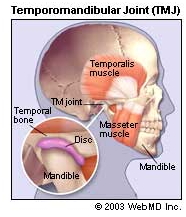
TMD often causes severe pain and discomfort. It can be temporary or last many years. It might affect one or both sides of your face. More women than men have it, and it’s most common among people between the ages of 20 and 40.
Common symptoms include:
• Pain or tenderness in your face, jaw joint area, neck and shoulders, and in or around the ear when you chew, speak, or open your mouth wide
• Problems when you try to open your mouth wide
• Jaws that get "stuck" or "lock" in the open- or closed-mouth position
• Clicking, popping, or grating sounds in the jaw joint when you open or close your mouth or chew. This may or may not be painful.
• A tired feeling in your face
• Trouble chewing or a sudden uncomfortable bite -- as if the upper and lower teeth are not fitting together properly
• Swelling on the side of your face
You may also have toothaches, headaches, neck aches, dizziness, earaches, hearing problems, upper shoulder pain, and ringing in the ears (tinnitus).
Traditional Treatments:
Medications. Your dentist can prescribe higher doses of NSAIDs if you need them for pain and swelling. He might suggest a muscle relaxer to relax your jaw if you grind or clench your teeth. Or an anti-anxiety medication to relieve stress, which may bring on TMD.
A splint or night guard. These plastic mouthpieces fit over your upper and lower teeth so they don’t touch. They lessen the effects of clenching or grinding and correct your bite by putting your teeth in a more correct position. What’s the difference between them? You wear night guards while you sleep. You use a splint all the time. Your dentist will tell you which type you need.
Dental work. Your dentist can replace missing teeth and use crowns, bridges, or braces to balance the biting surfaces of your teeth or to correct a bite problem.
In our dental clinics ,we do offer the latest techniques as follows:
Low-level laser therapy. This lowers pain and inflammation and helps you move your neck more freely and open your mouth wider
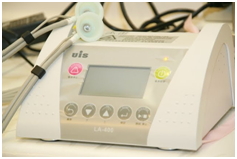

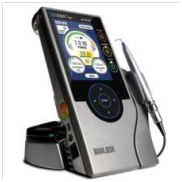
ezlase 940 nm – A therapeutic wavelength by Biolase Technology
Left to right: Body Contour Handpiece™, ezlase 940 nm diode laser system, handpiece disposable protective cover
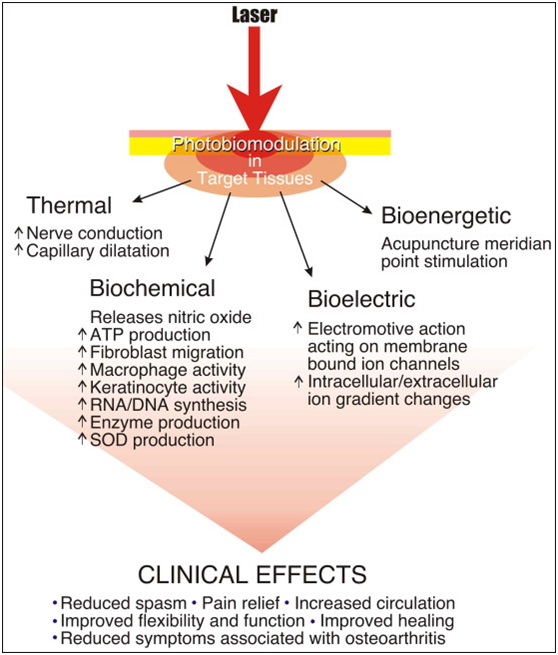
Procedure:
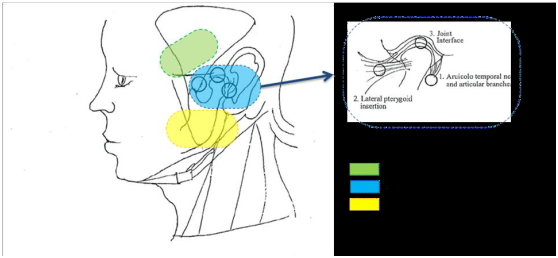
Treatment of Painful Regions: For the treatment of TMJ dysfunction, there are 3 regions where treatment has to be conducted:
o Temporalis Region
o Joint Region
o Masseter Region
Start with the Temporalis Region by placing the therapeutic handpiece over the painful area at approximately 1 cm above the skin surface. Select settings (please refer to Table 1 above). Start the treatment by activating the laser through the footswitch. Maintain the handpiece at the same location and distance for the duration of 5 minutes of laser exposure. Repeat the same for the other treatment regions.

5 – 6 treatments every 2-4 days. In cases where the pain is resolved within the first 2-3 treatment sessions additional treatments are not necessary
診療項目
- Endodontics (Root canal treatment)
- Waterlaser Gingival recontouring for ascetics
- Minimally invasive & 3D guided dental implantology
- Treatment of periodontal diseases assisted with LASERS
- Dental Veneers
- Full mouth reconstruction
- Orthodontics
- Safe removal of dental Amalgam fillings Inlay/ Onlay fabrication
- Temporomandibular Joint Disorders(TMD) Treatment
Reservation
- TEL : +886-3-2870074
- ADD. : No.206, Sec. 1, Gaotiezhanqian W. Rd., Zhongli Dist., Taoyuan City 320 Google Map
 Service Items
Service Items